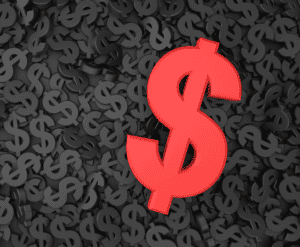When we go shopping, each item we buy has tags attached to them by the stores, be it apparel, ready-made clothing, toys, stationary, etc. Most of the time, one will notice that when it comes to branded products, the MRP printed on them is slightly reduced by the retailers so that it should end in the digit 9.

The price we pay for purchases is simply expressed in round numbers, ranging from 10 to 10,000. For most people, this minor detail is unimportant, and the situation is probably the same for you as well.
Charm pricing
The use of 9-ending pricing and discount claims have a positive link, so they are used to convey low-price attraction. This strategy is commonly referred to as charm pricing.
On the surface, a psychological explanation appears to be the only one that might account for pricing in the nines. Given that consumers are busy and do not think much about it, it makes sense to assume that they will not pay attention to the final digits. This means that when they see anything priced at Rupees 999, they assume it to be worth Rupees 900 rather than Rupees 1000.
Historical accounts of “just below prices”
While almost every research documents the psychological explanation, A study by RD McKenzie explores a historical facet behind the reason behind the prices ending with 9.
The study by McKenzie explores one historical account that holds that the origins of odd pricing can be found in the competitive endeavors of a businessman in Chicago in the middle of the 1870s. Melville Stone, a publisher and journalist, planned to launch a new daily in 1876 to compete with existing publications that sold for a nickel.
The not-so-novel marketing plan was to sell his paper for much less, for a penny. However, there weren’t many pennies at the time, which constrained his street sales. According to the report, Stone persuaded a few Chicago businesses that a just-below price of $1.99 would be seen by many customers as substantially lower than $2, possibly as low as $1 and that such just-below prices would be beneficial to them. Given that there were only a few other products available at the time that sold for a penny, this pricing would increase the number of pennies in circulation and increase his newspaper sales.
A study suggests, “This augmented the sales by 60% with the increase in sale of newspaper just with a change in one cent. Therefore, 9 ending pricing is also known as psychological pricing or charm pricing.”
Another theory holds that unusual pricing developed as a result of Macy’s advertising campaigns in the early 1900s, where $0.99 sales were allegedly quite effective. Such just-below pricing likely became widespread due to both the popularity of Macy’s sales as well as the fact that businesses discovered that just-below prices were a successful strategy for reducing employee theft.
As a result, cashiers would have to hand back change for prices that end in 9, making them record each purchase individually rather than many sales at once.
Final thoughts
Savvy marketers use consumer perceptions of pricing to their advantage. The left-digit effect is a contributing factor to why most prices end with 9, as consumers have a habit of reading numbers from left to right. Because of this, if shoppers are scanning fast, they may misinterpret a 499 price as 400. As a result, the price appears cheaper, more reasonable and desirable.
Read more: Ananya Birla’s Journey as a Musician and Entrepreneur







